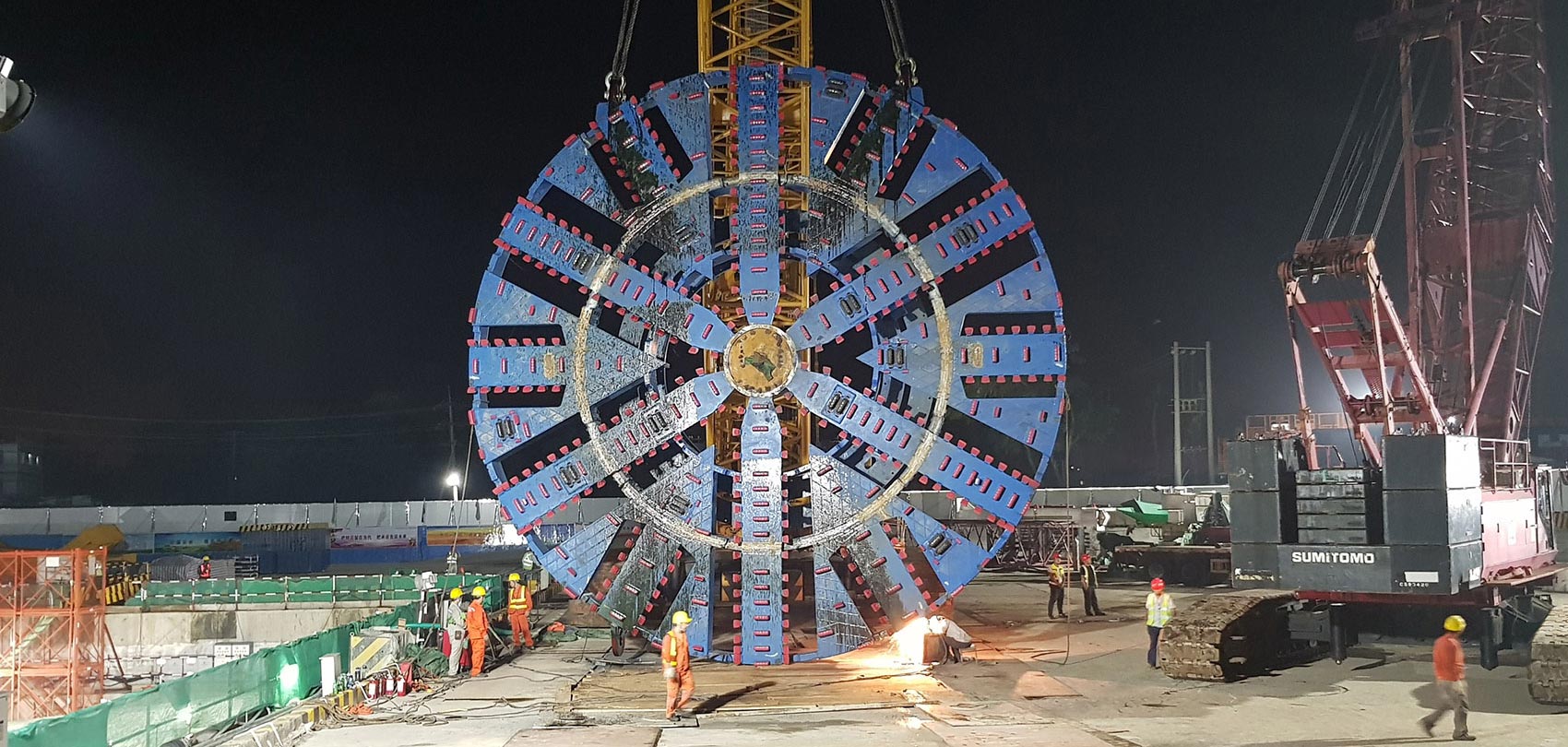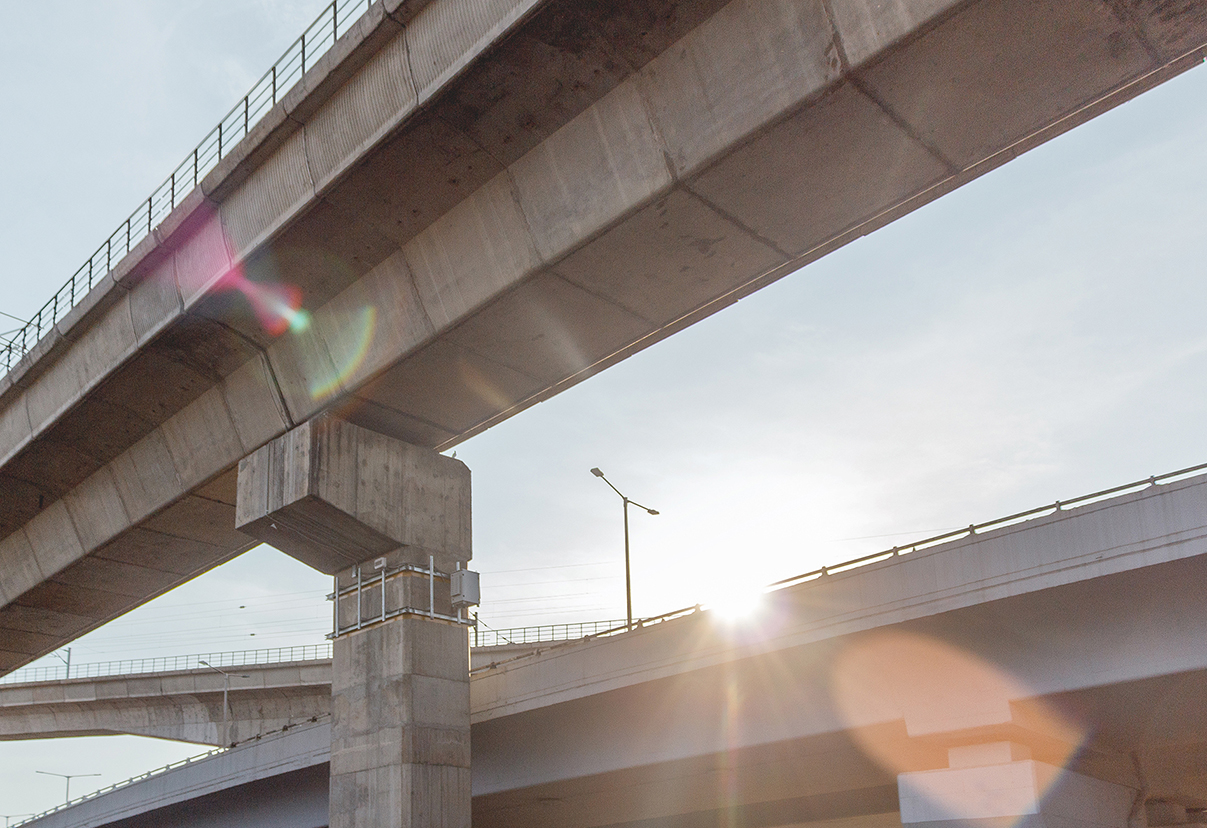
The solution? The Karnaphuli River tunnel – the first underwater tunnel in Bangladesh. The proposed twin 2.5-kilometre, 11-meter diameter tunnel under the Karnaphuli River together with approximately 6 kilometres of connecting roads will connect the region with the rest of the country and from Bangladesh into Mynamar. SMEC, along with its joint venture partners, was appointed to supervise the design and construction of the US$705 million Karnaphuli Tunnel Project in 2016.
The Karnaphuli Tunnel is a game changer for the south east region of Bangladesh, presenting a solution to connectivity issues to the rest of the country.
Works began in earnest in early 2018. The contractor China Communications Construction Company Ltd has already completed over 40% of the physical works including the installation of over 150 metres of the first tunnel and much of the above ground works.  This is a noteworthy achievement considering the significant amount of preparation work required for the twin 2.5 km road tunnels. The 11 m diameter tunnels are located under a very wide river near to the coast and will traverse varying layers of sand, silt and clays. Because of the geology of the site and the requirement to tunnel under a river, the slurry shield method of tunnelling has been adopted. This is a very difficult form of tunnelling exacerbated by the challenging and sometimes risky coastal environment the project is located in.
This is a noteworthy achievement considering the significant amount of preparation work required for the twin 2.5 km road tunnels. The 11 m diameter tunnels are located under a very wide river near to the coast and will traverse varying layers of sand, silt and clays. Because of the geology of the site and the requirement to tunnel under a river, the slurry shield method of tunnelling has been adopted. This is a very difficult form of tunnelling exacerbated by the challenging and sometimes risky coastal environment the project is located in.
A game changer for future generations
Tunneling is currently progressing slowly as it is still in its early stage. Slurry shield tunneling brings with it many risks. The movement of the tunnel boring machine (TBM) and its shield are affected by several factors including the varying ground conditions, overburden depth, slurry pressure, primary grouting pressure and over excavation. The TBM operators are constantly analysing these conditions and adjusting tunneling parameters to suit. As the operators are unable to see what they are tunneling, it requires a lot of experience in judging what is happening at the TBM face. SMEC is working closely with the contractor in relation to how to mitigate these risks, leveraging our teams’ significant experience in this specialised form of tunneling.  What makes this project even more meaningful is that we are training and developing Bangladesh’s future tunnel supervision engineers. As this is the first tunnel in Bangladesh, there is a national skills gap in this area and with more tunnelling projects coming on line, it is important that we upskill the next generation of Bangladeshi tunnelling engineers. It has been a pleasure to work with the young engineers as they are very keen, incredibly intelligent and confident. The rapid transfer of knowledge from our SMEC specialists to this young team is exciting to watch.
What makes this project even more meaningful is that we are training and developing Bangladesh’s future tunnel supervision engineers. As this is the first tunnel in Bangladesh, there is a national skills gap in this area and with more tunnelling projects coming on line, it is important that we upskill the next generation of Bangladeshi tunnelling engineers. It has been a pleasure to work with the young engineers as they are very keen, incredibly intelligent and confident. The rapid transfer of knowledge from our SMEC specialists to this young team is exciting to watch.
Connecting across cultures using technology
Anyone who has managed a complex, large-scale project will tell you that success isn’t only about being experienced, it often comes down to how well a diverse group of people communicate and work together towards a common goal. This is even more important when there are different languages and cultures involved. On this project we have worked together using three languages.  In addition to our formal communication system we’ve been taking advantage of apps like WeChat and auto-translation technology to facilitate better communication. Through 24/7 group chats, we are aware of any issues straight away and this has allowed us to always be on the front foot to tackle issues in their infancy.
In addition to our formal communication system we’ve been taking advantage of apps like WeChat and auto-translation technology to facilitate better communication. Through 24/7 group chats, we are aware of any issues straight away and this has allowed us to always be on the front foot to tackle issues in their infancy.
We have established a strong document management system that allows us to remotely interrogate and access all project data generated including drawings, letters and test data both from Bangladesh and China. An interesting aspect of the project procurement is that all the pre-cast concrete tunnel lining segments are made in China and shipped to Bangladesh. We maintain a team in China that ensures the quality of the 20,000 twelve tonne segments being cast for the project.
Another innovative development, funded by our client, has been the establishment of a new Tunnel Management System that allows us to collect, interrogate and analyse all data collected on site, including the data coming from the TBM. We can maintain a strong historical record of everything that happens on site and analyse it when required. This information is not only invaluable from a governance viewpoint but is also an important reference for future projects.
What makes this project even more meaningful is that we are training and developing Bangladesh’s future tunnel supervision engineers. The rapid transfer of knowledge from our SMEC specialists to this young team is exciting to watch.
 Delivering for the community
Delivering for the community
The Karnaphuli Tunnel is a game changer for the south east region of Bangladesh, presenting a solution to connectivity issues to the rest of the country. Upon its completion in 2022, the tunnel will form another link in the connection between North and Southeast Asia. It is also part of China’s One Belt One Road initiative and a key link in planned cross-country transport corridors.
Along with the Chittagong Outer Ring Road and the Dhaka Chattogram Expressway – both of which were designed by SMEC – the Karnaphuli Tunnel is poised to be a catalyst for the economic transformation of southeast Bangladesh into an industrial hub. The economy of Bangladesh will receive a significant boost once the tunnel is constructed, creating major employment opportunities for the region.
While not due for completion until 2022, the project has already delivered some outstanding achievements and if these continue, the country’s high expectations of the Karnaphuli Tunnel will certainly be met.SMEC is lead firm in the Design Review and Construction Supervision joint venture for the project, partnering with COWI A/S and in association with ACE Consultants Ltd and DevConsultants Ltd.
Related
insights
 Dohazari to Cox's Bazar Railway project, Bangladesh reaps benefits of site safety culture
Dohazari to Cox's Bazar Railway project, Bangladesh reaps benefits of site safety culture
Health and safety should be an integral part of businesses, of all shapes, and sizes. At SMEC it is imperative that we protect the well-being of people associated with our company, whether on-site or in the office.
 A reliable delivery partner: Progressing essential infrastructure during COVID-19
A reliable delivery partner: Progressing essential infrastructure during COVID-19
India, Bangladesh and other South Asian nations have been battling a resurgence of COVID-19 for the past several months, with strict lockdown measures enforced in many cities.






